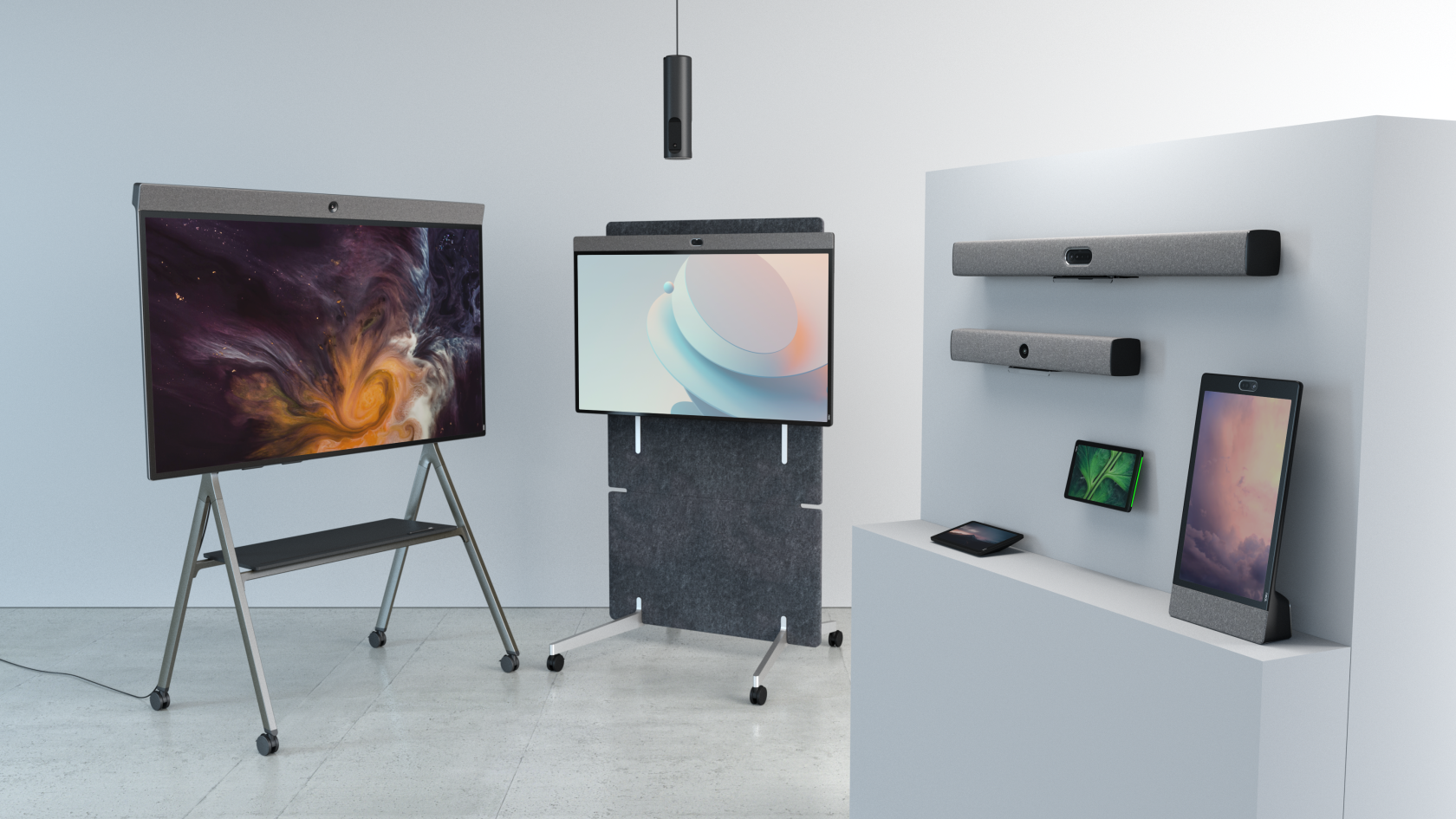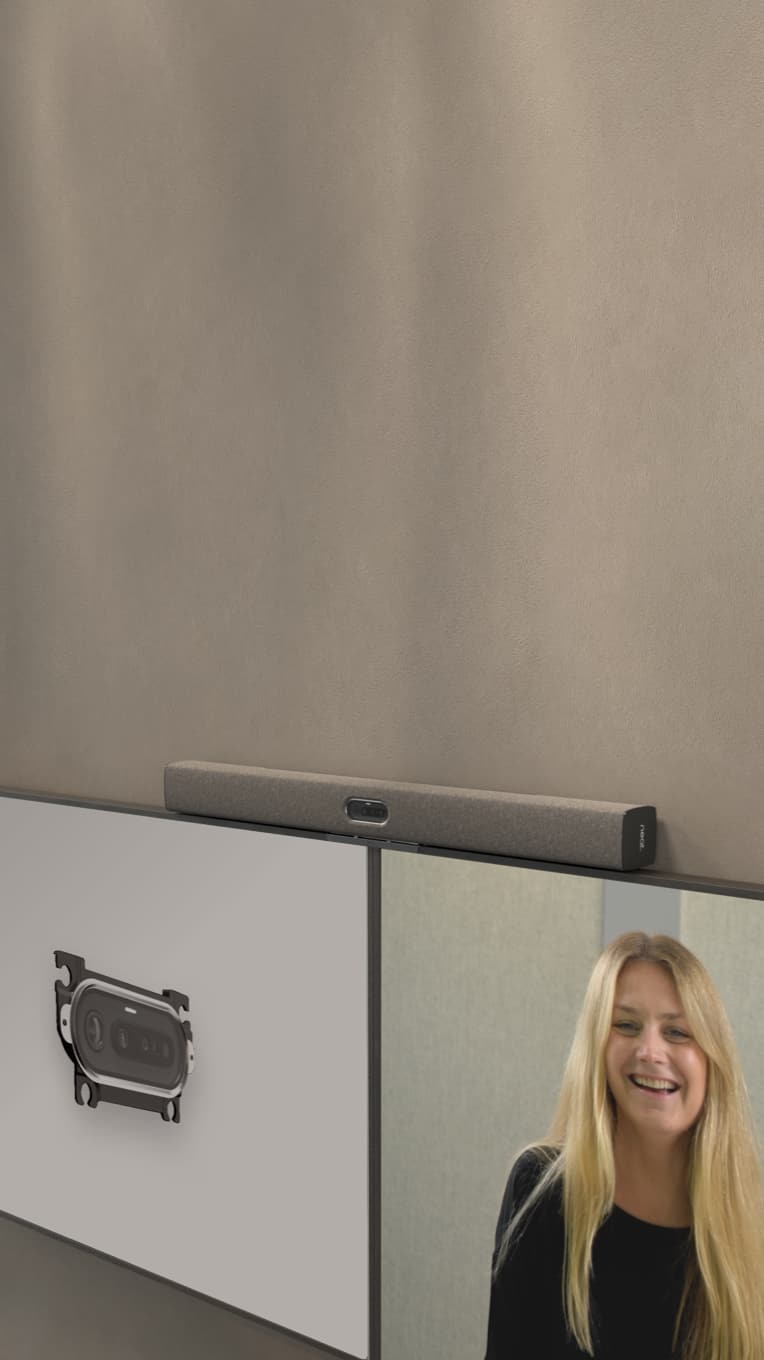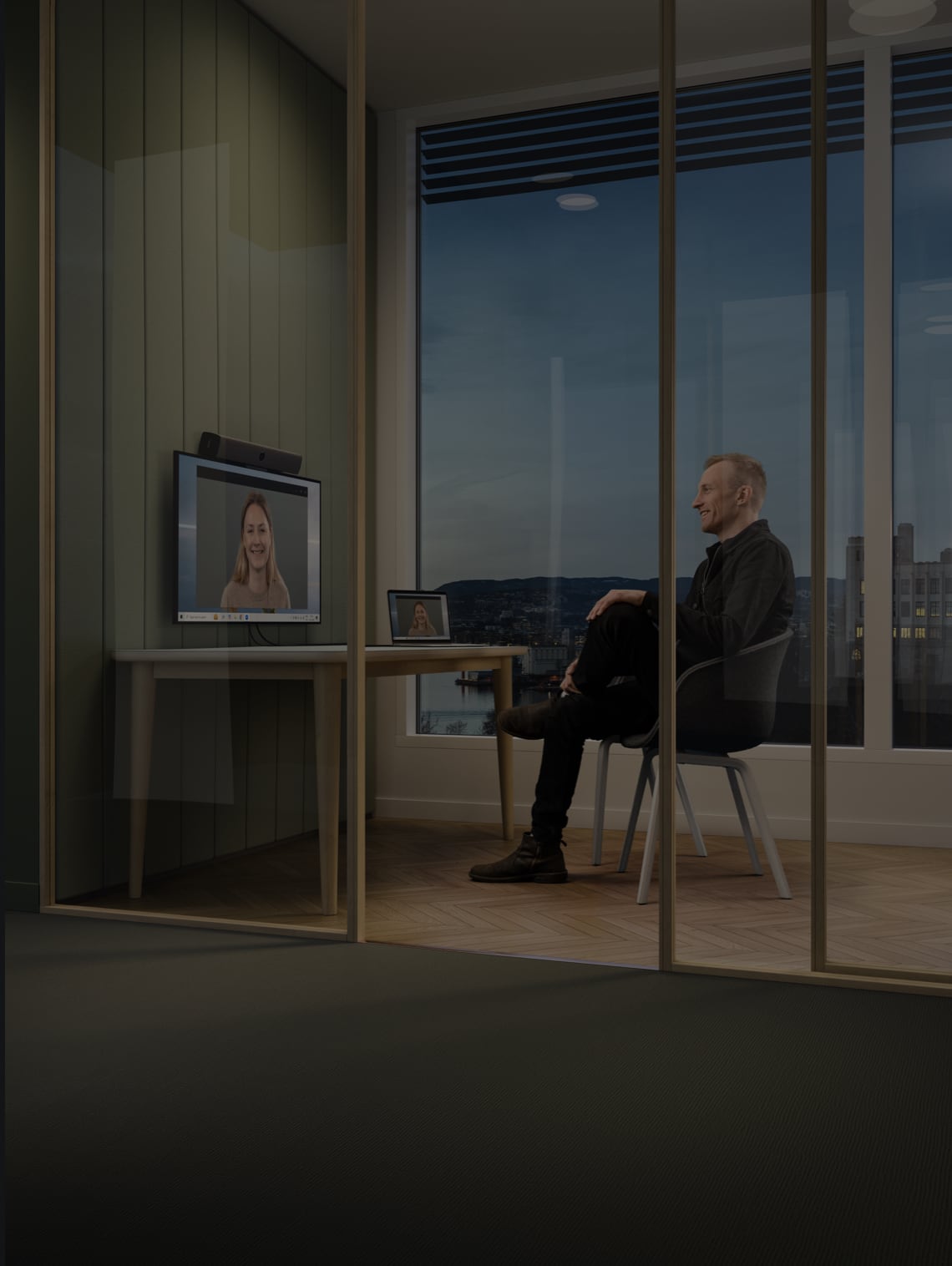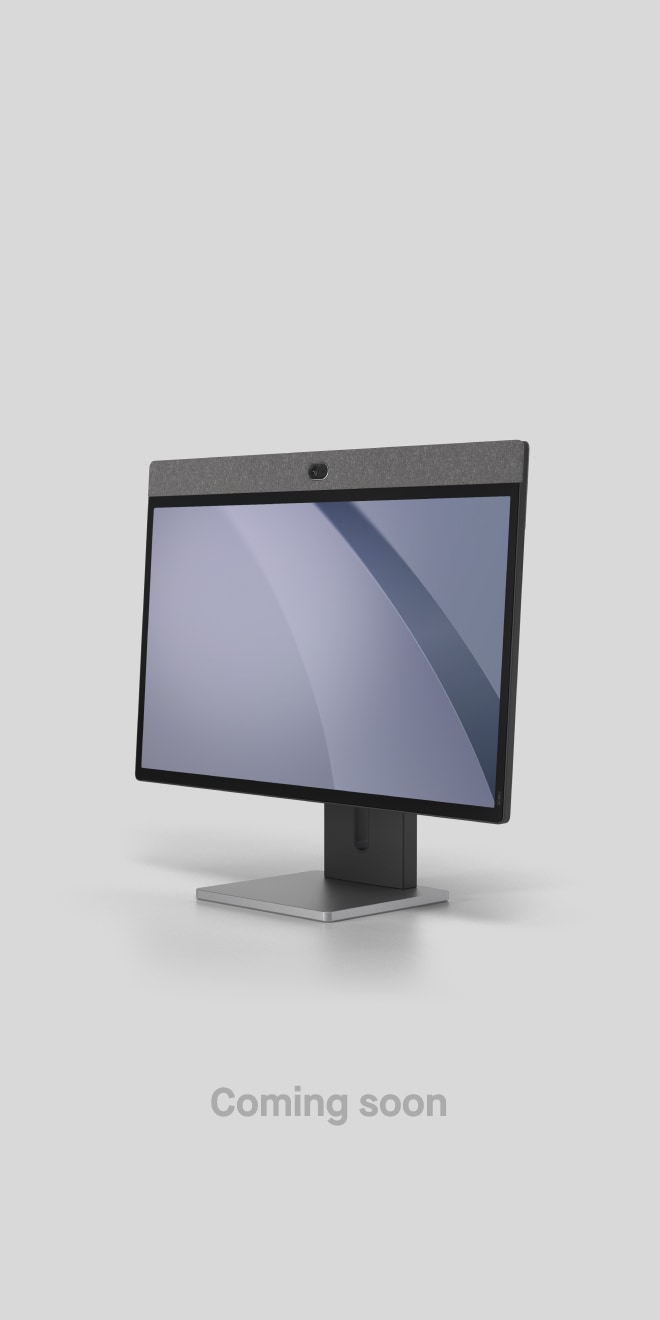How to Choose the Right Video Conferencing Solution for Your Company
Neat, May 13, 2025

In today’s dynamic business environment, the ability to communicate clearly, effectively, and instantly is critical. Whether you’re managing a hybrid workforce, hosting client meetings, or collaborating across time zones, the right video conferencing solution is essential. But with so many options available, how do you choose the video conferencing system that aligns with your business goals?
This comprehensive guide explores what to consider when selecting a solution, why the right fit matters, and how to ensure your video conferencing setup supports growth, engagement, and productivity.
Key takeaways
- Learn how to choose a video conferencing system that fits your company’s size, workflow, and growth goals.
- Understand the role of ease of use and scalability in long-term success and team adoption.
- Get practical video conferencing setup tips to enhance meeting quality and user experience.
- Compare leading video conferencing solutions and find the best option for your business needs.
Why the right video conferencing system matters
As digital collaboration becomes more integral to day-to-day operations, companies are increasingly relying on video conferencing to maintain alignment and productivity. A well-chosen system improves internal workflows, strengthens relationships with clients and partners, and helps maintain a sense of presence for remote workers.
The wrong one, however, can lead to technical disruptions, poor user experiences, and security vulnerabilities. That’s why it’s so important to evaluate video conferencing solutions strategically, not just based on cost or popularity.
Understanding your company’s needs
Every organization is different. A startup might prioritize flexibility and cost-effectiveness, while a large enterprise may be more concerned with security, compliance, and administrative control. Before evaluating tools, analyze your typical meeting formats, collaboration habits, and current tech stack.
Consider the tools your team already uses. If you’re embedded in the Microsoft ecosystem, Microsoft Teams may be ideal. If your company prefers browser-based tools, Google Meet could be a better fit. Aligning with your existing workflows reduces friction and boosts adoption.
Evaluating leading video conferencing platforms
There are many options, each catering to specific needs:
- Zoom is known for its ease of use and reliability, making it ideal for external calls and webinars.
- Microsoft Teams integrates deeply with Office 365, offering chat, file sharing, and video in one space.
- Google Meet is lightweight and browser-based, perfect for Google Workspace users.
Additionally, some platforms are enhanced when paired with purpose-built hardware. Neat devices, for example, are dedicated to elevating the experience on platforms like Zoom and Microsoft Teams.
The importance of ease of use
No matter how powerful a platform is, it won’t deliver value if users find it frustrating. Look for systems with intuitive interfaces, easy joining processes, and minimal setup. The best video conferencing for business prioritizes user experience.
Ease of use also includes minimal maintenance, automated updates, and reliable connectivity. Solutions like Neat simplify the user journey with one-touch join features and intuitive interfaces that minimize the need for IT support.
Scalability: plan for now and the future
Your video conferencing solution should grow with your business. Scalable systems support additional users, integrate with identity management systems, and provide flexible licensing.
Features like role-based access, enterprise reporting, and multi-location support ensure that your video conferencing setup remains effective as your organization expands. Scalable hardware – like Neat’s portfolio of devices – can be deployed across multiple rooms and managed centrally for consistency.
Investing in the right hardware
Software alone can’t deliver a premium video conferencing experience. High-quality hardware ensures that every meeting is clear, professional, and productive. The right devices eliminate distractions and help participants focus on the conversation.
Here’s what to look for:
- Cameras: High-definition resolution, wide-angle lenses, and auto-framing features ensure everyone is seen clearly. Devices like Neat Bar Generation 2 includes intelligent cameras that adapt to the number of participants in the room.
- Microphones: Directional audio capture, noise cancellation, and echo reduction are critical. Built-in mics in Neat devices are designed to pick up voices from all corners of a room while filtering out background noise.
- Speakers: Clear, high-fidelity speakers ensure that all participants can hear and be heard, especially in larger spaces. Neat devices are engineered for consistent audio output across different room sizes.
- Touch interfaces: Devices like Neat Pad allow for quick access to meeting controls, room booking, and volume adjustments without disrupting the flow of the meeting.
- Design and simplicity: Neat hardware emphasizes minimalist, cable-free setups with smart sensors and automatic updates. This means your teams can focus on the meeting instead of the technology.
- Compatibility: Make sure your hardware works natively with your chosen software platform. Neat devices are certified for both Zoom and Microsoft Teams, ensuring seamless integration and minimal IT intervention.
- Deployment and management: Scalable hardware solutions should be easy to deploy across locations and managed remotely. Neat’s cloud-based management portal, Neat Pulse, provides real-time insights and troubleshooting across all your devices.
Ultimately, the right hardware turns video conferencing from a frustrating necessity into a productive, immersive experience. It helps remote teams feel more connected and ensures external meetings reflect your brand’s professionalism.

Practical video conferencing setup tips
A well-thought-out setup can make a major difference in how your meetings are perceived:
- Use front-facing, soft lighting to eliminate shadows and highlight faces.
- Position cameras at eye level to simulate direct eye contact.
- Keep backgrounds clean or use professional virtual options.
- Invest in acoustic treatments or noise-dampening furniture to improve audio – or Neat choose Neat devices so acoustic treatment is not necessary.
Consistency across rooms also matters. Standardizing your video conferencing setup across offices and locations ensures everyone has a uniform, reliable experience.
Budget considerations and ROI
While cost is always a factor, value should drive your decision. Free tools might work for internal calls but often come with limitations. Paid tiers offer more reliability, security, and features like cloud storage or meeting analytics.
Consider long-term ROI: reduced travel expenses, improved meeting efficiency, and enhanced customer impressions all contribute to the value of the investment. Hardware like Neat’s all-in-one video collaboration devices, can reduce the need for complex integrations and costly IT support.
Training, support, and future growth
Adoption is easier when teams have access to onboarding resources, user training, and responsive support. Choose vendors that offer 24/7 assistance, knowledge bases, and regular feature updates.
Future-ready solutions are those that evolve with your business. As AI, real-time translation, and smart room features become more prevalent, ensure your platform and hardware are equipped to support these innovations.
Final thoughts
Choosing the right video conferencing system is about more than just technology—it’s about empowering your teams to collaborate effectively, wherever they are. By focusing on usability, scalability, and the right mix of hardware and software, you can build a solution that supports your business today and into the future.
Evaluate your needs carefully, test different platforms, and don’t underestimate the impact of dedicated hardware. The best video conferencing for business brings people together, enhances productivity, and delivers a seamless experience every time.
Want to know more about how Neat can support your Company? Don’t be shy, book a demo with one of our friendly experts.
Sources
Zapier – Best Video Conferencing Apps Comparison
TechRepublic – Zoom vs. Microsoft Teams vs. Google Meet






